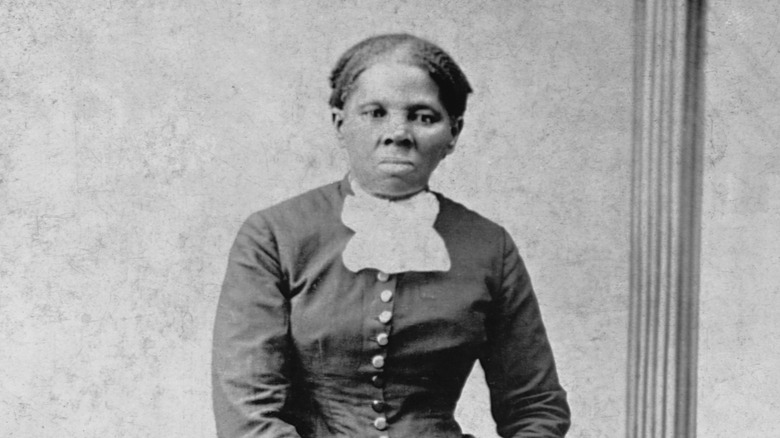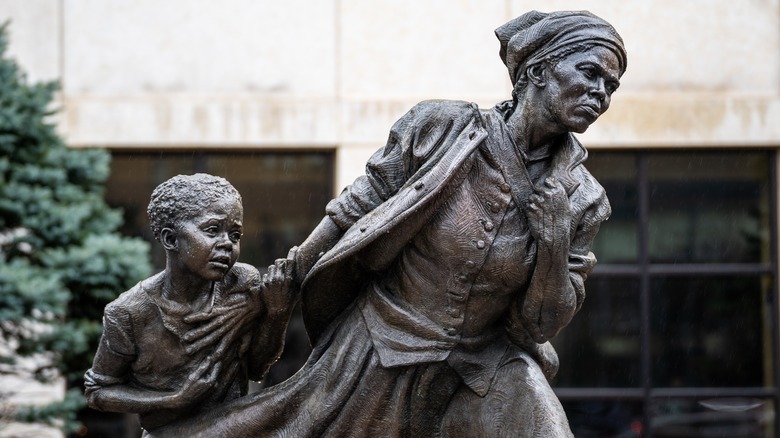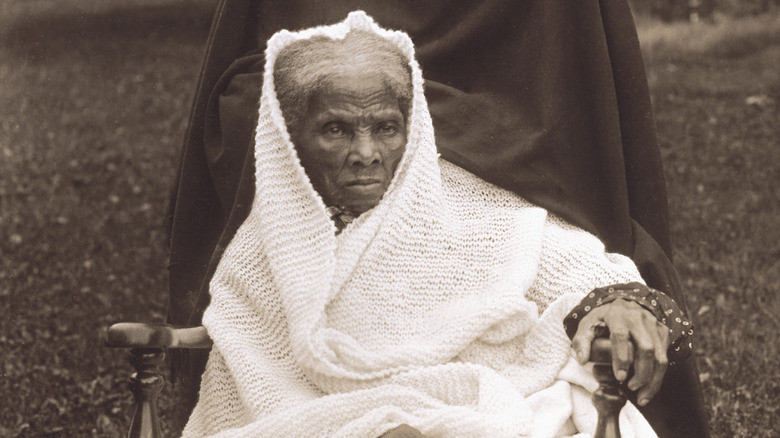Here's Where You'll Find Harriet Tubman's Grave
Sometimes it takes a whole lot of work to make the smallest difference, no matter how that difference might grow down the line. Few embody that statement better than Harriet Tubman, a figure rightfully revered in American history as a "conductor" of the 19th-century Underground Railroad that ushered over 100,000 enslaved Black Americans to freedom.
As History recounts, Tubman escaped slavery in Maryland in 1849 and found work at a house in Philadelphia — but couldn't leave so many others behind. Although some claim a higher number, Tubman estimated that she helped rescue about 70 people across 13 separate trips back to Maryland, per the National Park Service. In comparison, the U.S. Library of Congress says that nearly 4 million Americans were enslaved in the mid-1800s when Tubman was active. Such numbers fall by the wayside, though, when looking at the kind of unabashed bravery it would have taken for Tubman and others to risk capture while escorting people to safety.
Tubman's story has lived on in the over 110 years since she died in 1913. In 2021, President Joe Biden rekindled the process for minting her face on the U.S. $20 bill, per CNBC. Meanwhile, Tubman has no official federal commemorative site — only a simple grave at Fort Hill Cemetery in Auburn, New York, where she lived, per Find a Grave. It reads "Harriet Tubman David" on one side and has a small paragraph about her life and work on the other.
A modest grave in Auburn, New York
"To the memory of Harriet Tubman Davis: Heroine of the Underground Railroad, Nurse and Scout in the Civil War. Born about 1820 in Maryland. Died March 10, 1913 at Auburn, N.Y. Servant of God, Well Done." This epitaph on Tubman's headstone, erected in 1937 by the Empire State Federation of Women's Clubs, might not be flashy or verbose. But its all the more fitting as a result, and an excellent marker of Tubman's physical resting place at Fort Hill Cemetery in Auburn, New York. Pictures on sites like Tripadvisor show flowers planted at Tubman's grave, rocks stacked on her tombstone, and even pictures, cards, various personal effects, and other memorabilia left in her honor.
As we can see on Google Maps, Fort Hill Cemetery is a quick drive or a nice walk away from Tubman's actual home, which is now a historical building in Harriet Tubman National Historical Park. The park is run by the African Methodist Episcopal Zion Church, which set up the non-profit Harriet Tubman Home Inc. to preserve Tubman's legacy, home, and its grounds. As the site says, "The church has maintained a living memory that will honor the legacy of Harriet Tubman and the freedom movement she so eloquently represented for decades of future generations." They offer 90-minute tours twice a week by appointment only, which is the perfect activity for anyone planning on visiting Tubman's grave nearby.
Emancipator, nurse, and scout
The epitaph on Harriet Tubman's headstone describes a couple more roles that Tubman adopted during her life: nurse and scout for Union army in the Civil War (1861 to 1865). Up until the Civil War broke out, Tubman had been working with the Underground Railroad escorting enslaved people to safety, as is commonly known. When the war broke out, Tubman worked at Fort Monroe in Hampton, Virginia, to take care of those who escaped from the South. Aside from herbal medicine, she also assisted with cooking and cleaning at the fort, all of which no doubt helped fugitives feel far more comfortable. Come 1863, Tubman even headed up a network of scouts who provided intelligence to the Union Army.
As for how Tubman managed to sneak into Maryland and help folks escape to begin with, she'd basically already acted as a spymaster before the Civil War even started. She wore disguises when traveling, swapped methods of transportation, tapped networks of trustworthy people, passed along letters, bribed when necessary, followed the stars and rivers for directions, and even sang songs at different tempos to indicate whether or not it was safe for people to emerge. She already knew the aforementioned 70 people whom she rescued and trusted them with such a dangerous venture. All in all, even though Tubman's current grave honors her perfectly well, it might be high time for a grander memorial befitting her efforts.


